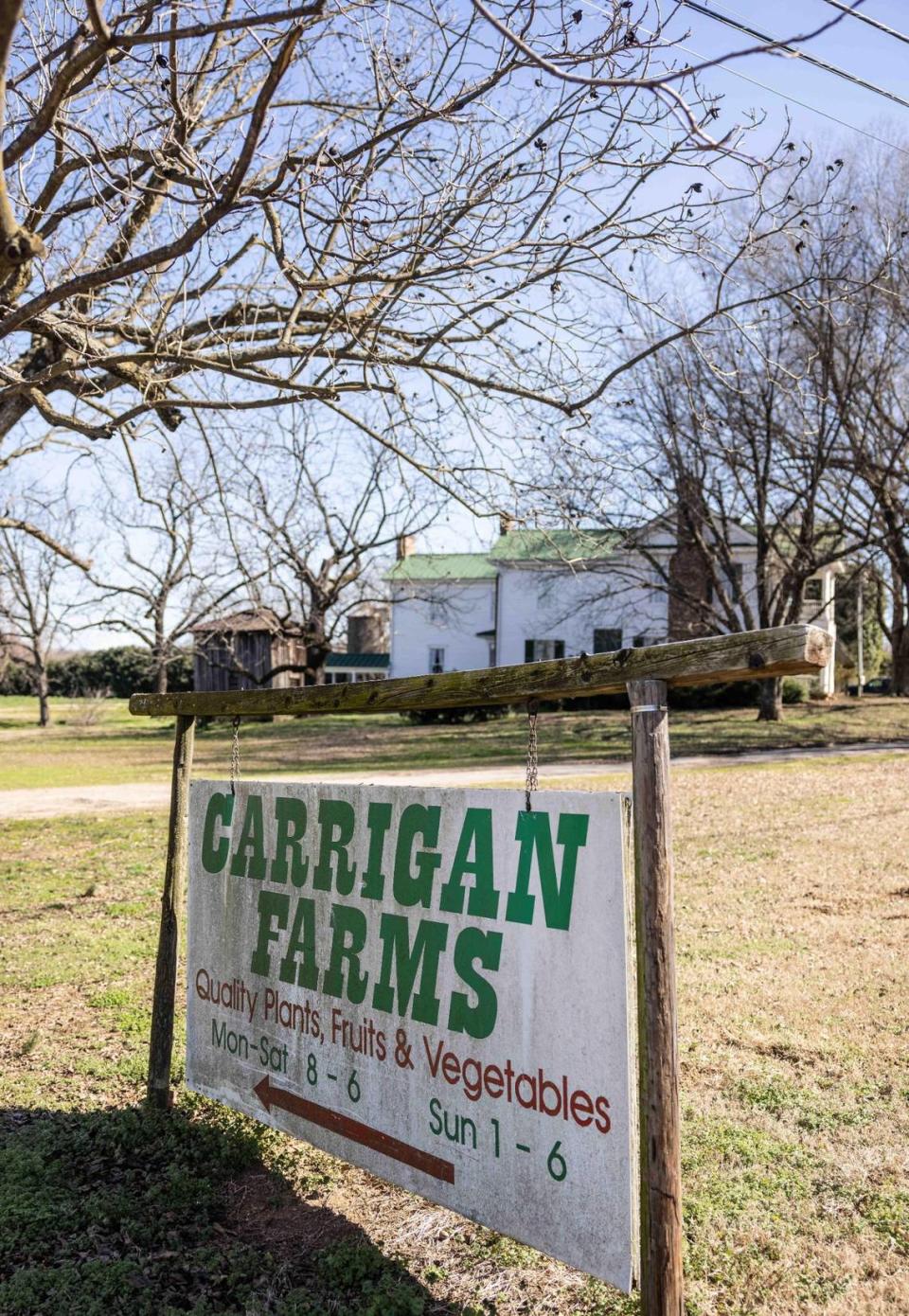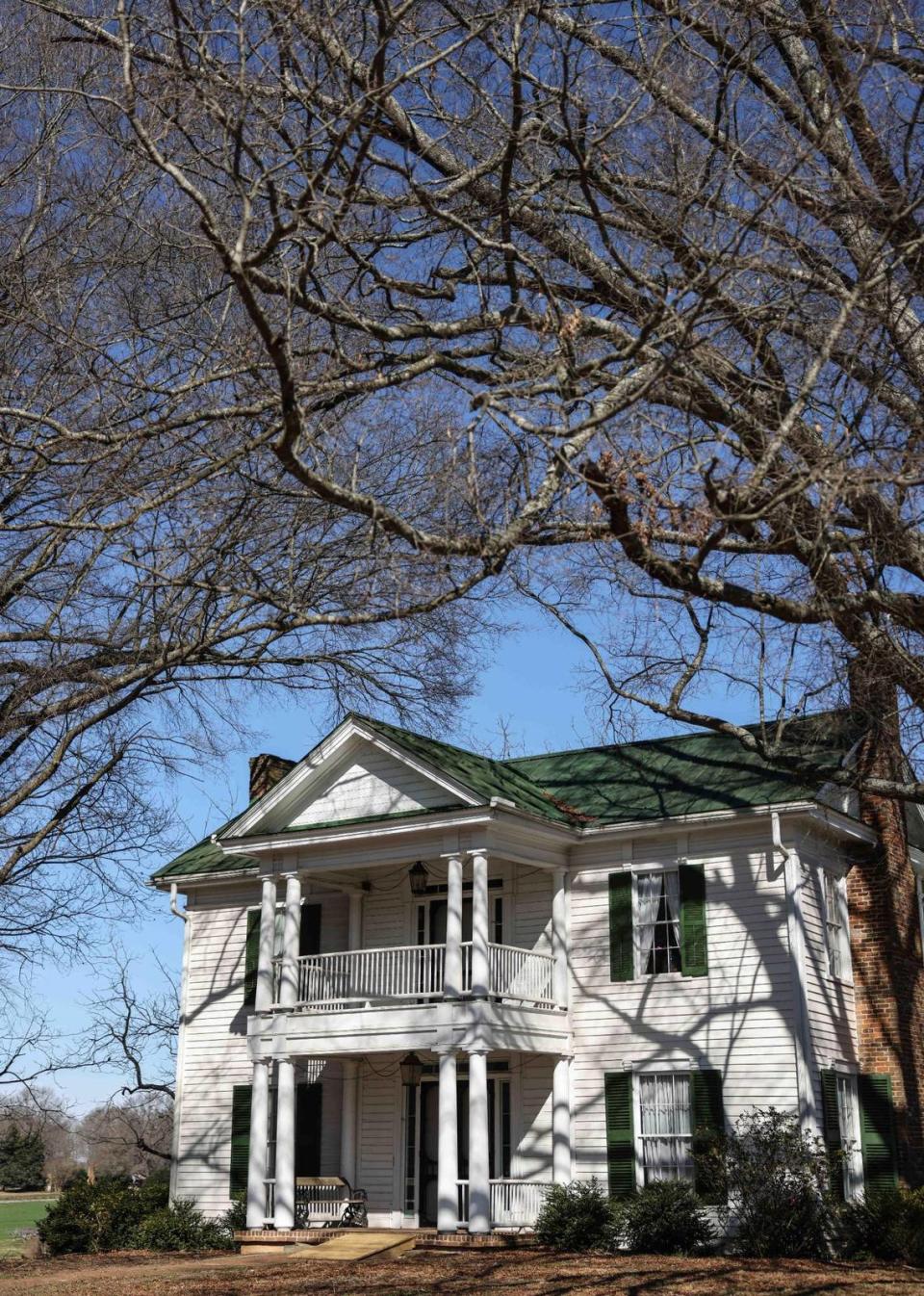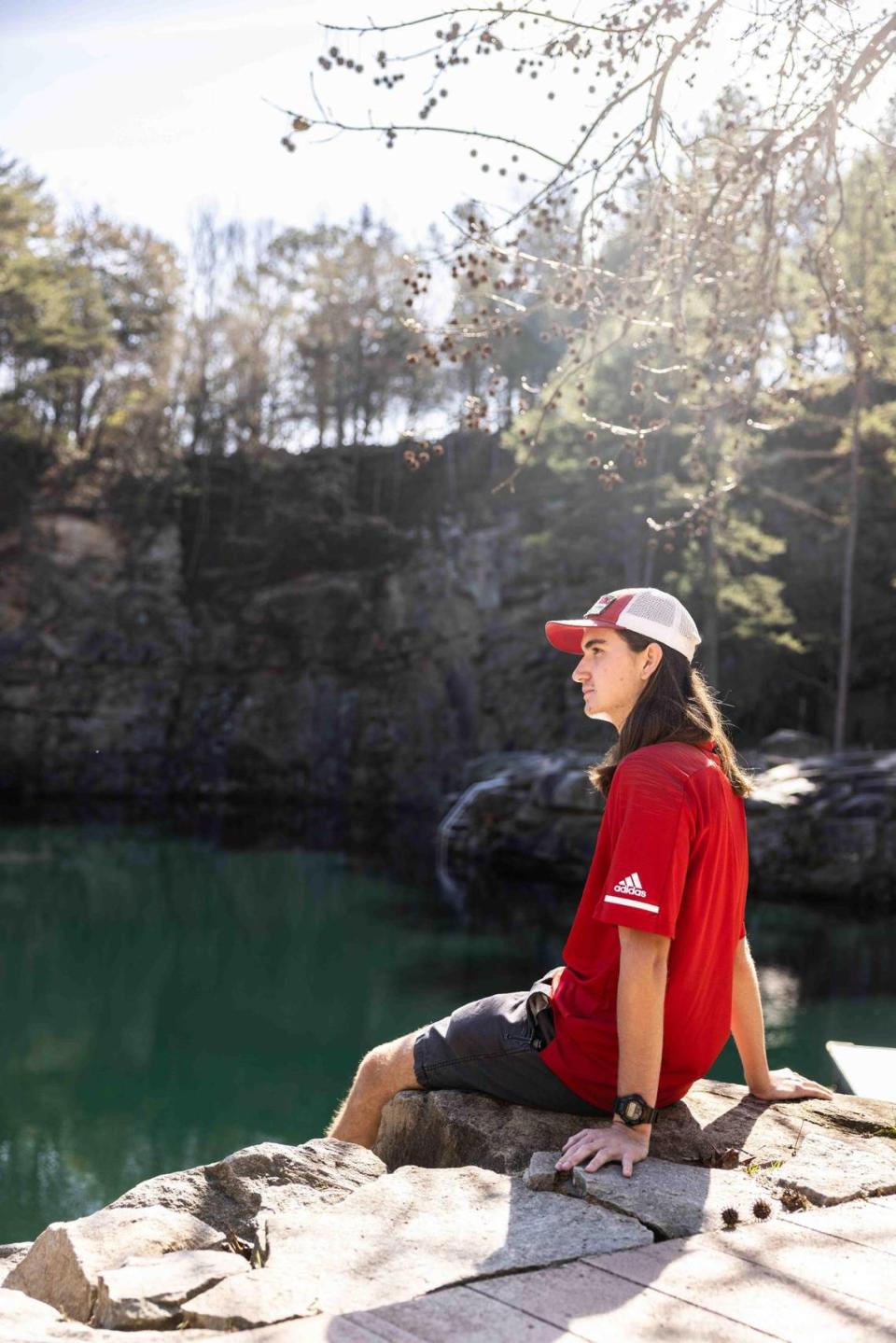This Mooresville farm family has tilled Piedmont soil since before America’s founding
As Mooresville celebrates its 150th year, few families can say they’ve been in the North Carolina Piedmont longer than the Carrigans.
The first of this family of farmers came from Scotland and Ireland in the 1750s, “so we’re about as deeply ingrained in the Piedmont as much as anybody can be,” except for Native Americans, Doug Carrigan told an interviewer in 2019 for UNC Charlotte’s “The Queen’s Garden: Oral Histories of the Piedmont Foodshed” collection.
“We just farm,” Carrigan, now 70 and still tilling the soil at his Carrigan Farms on N.C. 150 East (Oakridge Farm Highway), said at the time. “We’re married to the land first. We live off the land, eat off it. It’s our only source of income. Some days we make 2 bucks an hour, sometimes $200.”
The farm also has a quarry where people swim by reservation and hold weddings and corporate events.
Doug Carrigan’s 21-year-old son, William Wade Carrigan, intends to keep the traditions of the farm going.
“I’m the fifth generation to live on this farm and work the dirt,” William Carrigan told The Charlotte Observer on the front porch of the home, as traffic whizzed close by on N.C. 150.
William Wade Carrigan graduated with honors from N.C. State lastMay with a bachelor’s in horticulture and a minor in entomology. His sister, Elizabeth, 22, helps on the farm during busy stretches but plans to be a nurse practitioner, he said. Their mom is Kelly Carrigan.

Their family bought the farm in 1902, and generations have lived ever since in the home that was built there in 1852.
The following is a Q&A with William Carrigan, lightly edited for space:
Q: Tell us about the history of your family.
A: “We came to America and the Piedmont before America was founded. Some of the first Carrigans came to America in the 1760s, and there are other sides of my family, the Linker side of the family, that came around that time, too.”
When his family bought the farm, “it was just kind of a subsistence farm,” he said. “They did everything to survive. They had pigs and cows and chickens and wheat and corn. They didn’t go to the grocery store, because they couldn’t go to the grocery store. So they had to do everything.
“But that’s how everyone lived back then. Everyone was a farmer, and that’s how they got by.
“Then my great-grandfather did a lot of cotton, as every other farm did in Iredell County. Cotton was a big cash crop for them. That was around the 1930s.
“And then my grandfather got into the dairy business. There were a lot of dairies around Iredell County at that time. Now there’s not as many dairies.
“My dad got a degree in horticulture from N.C. State, and then he decided he wanted to sell the cows. And so now he started doing pick-your-own agritourism horticulture, which is still what we’re doing. I’m continuing on the same thing.
“And so that’s the evolution of the farm through the times. ... We’re always kind of changing, doing something.”
Q: What is a typical day for you on the farm?
A: “Every day is different. This time of the year, in winter, there’s not a whole lot going on. Some pruning, a lot of apple pruning. But there’s always little farm tasks, fixing this, building that. Just today, I was unloading a trailer for a greenhouse, we’re going to be putting up a new greenhouse.
At the end of February, Carrigan had 2,000 apple trees delivered. ”We’re going to plant a new apple orchard. So there’s always things to keep you busy.”
Q: What’s on the farm?
A: “We mainly do pick-your-own apples, strawberries and pumpkins. We have a small garden for us to eat off. And sometimes, whenever we do events at the quarry, we’ll use some of the food from the garden to feed those people. So we do some farm-to-table stuff like that at the quarry whenever you eat there.”
Q: Your family has been in the Piedmont so long. Do you ever think about that?
A: “I do like to think about that sometimes. What went on right here 150 years ago, because this house was here before 150 years. My family probably sat on this same porch and talked about whatever.”

Q: What do you think they talked about?
A: “I don’t know, current politics, or, ‘we’ve got to plow the field today.’ Could be anything. But that’s cool to think about, the history.”
Q: What do you think of the changes in Mooresville? People are coming from everywhere.
A: “It’s getting busy, yeah. Highway 150 right here, I don’t know if you can hear the cars zooming by, but when this house was built, that highway wasn’t there. It was just nothing, it was empty. It’s getting busier, lot more people, but a lot more jobs, too, so that’s good. Business, too. They’re customers, so that’s good.”
Q: What do visitors to the farm like best?
A: “People aren’t just coming to pick a fruit or to eat a fruit. They’re coming for an experience. They want to come out and pick the strawberries and have fun with their family. Or take a hay ride and pick a pumpkin and make that memory.”
Q: Where do customers come from?
A: “We get customers from everywhere. A lot of people from Charlotte, some from Greensboro, Winston-Salem. Usually an hour away. But when my dad first started doing pick-your-own farming, it was mainly all roadside. People would just see the farm and say, ‘Ooh, I want to pick some apples, I want to pick some strawberries. And now it’s all a destination. People put it in their GPS and they come specifically for that.”
Q: Can you tell us about that old well beside the house?
A: “It’s a little decrepit now, but there’s some history behind that well. It was called Deep Well. If you look at old maps of Iredell County, before Mooresville was created, it didn’t say Mooresville. It said Deep Well. And that was the well.
That well was dug before this house was built. When the original Hargrave family started living here, before the Carrigans bought the land, they needed a clean source of water. So the first thing they needed to do whenever they settled was to a dig a well. And that’s the well.
Q: Is the well still used?
A: “No. But it still works. You could throw a bucket down there and get clean water out of it. You could drink it, because it seeps through the soil. It’s clean. It’s filtered. It’s like well water, it’s the same thing. If we ever lost power, yeah, you could throw a bucket down there and drink out of it.
“My granddaddy said that he used to lower a watermelon down in the bucket because it’s cold down there. And then he would chill the watermelon and pull it out on a hot summer day and eat the watermelon.”
Q: A lot of people in their early 20s say they want to see the world, they don’t want to return to their house. What do you think about that?
A: “For me, this is home. I really wouldn’t want to live anywhere else than Iredell County, North Carolina. My family’s been here for so long, got deep roots, literally. We’re farmers.”
Q. Farming is one of the toughest jobs in the world. How do you look at it?
A: “Mother Nature’s your boss. Spring freezes are a big problem for us. You could lose a whole crop in one night. It’s a gamble, like anything. But that’s what my family’s been doing. We live off the land.”
Q: Your family knows the Piedmont soil better than anyone. Why did you bother going to college?
A: “There’s a lot that college teaches you that you can’t just learn by kicking the dirt around. There’s a lot of science involved in farming, too.”
Q: We all hear reports that some children in America don’t know where fruits and vegetables come from. Have you heard that when you give school groups tours of your farm?
A: “A lot of kids have never seen a real apple tree. They don’t know that apple comes from a tree. Kids that have never seen a corn plant before. We had some little kids come out, I think in second grade. I was growing some sweet corn and offered them a bite. Raw sweet corn is delicious. ‘This is the best corn I’ve ever had,’ they said. They didn’t know that corn grew on a stalk. They ate sweet corn right in the field and thought it was the best thing ever.”
Q: How do you see the future of Carrigan Farms?
A: “Hopefully in 50 years, I’ll still be farming. Maybe it’ll change and evolve into something else. Maybe it won’t be agtourism anymore, could be wholesale, whatever. It’s hard to tell the future. But I’d like to keep farming. Keep it in the family. Maybe I’ll have a sixth generation.”


